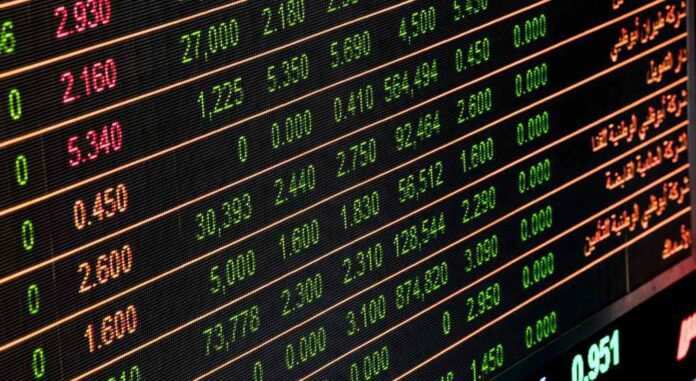In today’s financial markets, few products have transformed investing as profoundly as the Exchange-Traded Fund (ETF). Whether you are a retail investor buying your first diversified basket of stocks, or a sophisticated asset manager constructing model portfolios, ETFs have become an essential building block.
But what exactly is an ETF? How does it differ from other exchange-traded products (ETPs) such as ETNs (Exchange-Traded Notes)? And how does it compare with more complex instruments like futures or equity swaps?
This Word of the Day will take a deep dive into ETFs, explaining their structure, uses, and advantages, while also highlighting their differences from other commonly used financial products.
What is an ETF?
An Exchange-Traded Fund is a pooled investment vehicle that holds a collection of securities — such as stocks, bonds, commodities, or currencies — and trades on an exchange just like an individual stock.
Think of it as a basket of assets wrapped into a single share. By buying one share of an ETF, you gain exposure to dozens or even hundreds of securities, depending on the fund’s design.
- An S&P 500 ETF, for instance, gives you exposure to the 500 largest U.S. companies in a single trade.
- A gold ETF tracks the spot price of gold, allowing you to invest in the precious metal without holding physical bullion.
- A bond ETF can hold corporate, government, or high-yield bonds, providing fixed-income exposure.
Unlike mutual funds, which are priced once per day after market close, ETFs trade intraday. This means you can buy and sell them throughout the day at market prices, just as you would trade shares of Apple or Microsoft.
How ETFs Work
ETFs are typically created and redeemed through a process involving Authorized Participants (APs) — usually large banks or financial institutions.
- Creation – APs deliver a basket of securities to the ETF provider in exchange for ETF shares.
- Redemption – APs return ETF shares to the provider in exchange for the underlying securities.
This mechanism helps keep an ETF’s market price closely aligned with the net asset value (NAV) of its holdings. It also provides liquidity and efficiency, making ETFs cost-effective for investors.
Why ETFs Are Popular
The growth of ETFs has been explosive. In 2000, global ETF assets under management were under $100 billion. By 2025, they surpassed $12 trillion worldwide. This surge is driven by several key benefits:
- Diversification
With one trade, investors get exposure to an entire market, sector, or theme. For example, instead of buying individual tech stocks, you can purchase a technology ETF. - Liquidity and Flexibility
Because ETFs trade intraday, you can enter and exit positions quickly, unlike mutual funds which settle once daily. - Cost Efficiency
ETFs generally have lower expense ratios compared to actively managed mutual funds. Index ETFs, in particular, often cost just a few basis points annually. - Transparency
Most ETFs disclose their holdings daily, so investors know exactly what they own. - Accessibility
ETFs democratize investing by allowing small investors to gain exposure to complex strategies — such as emerging markets, commodities, or factor investing — that were once accessible only to institutions.
Types of ETFs
ETFs are incredibly versatile and can be structured to provide exposure to almost any asset class or strategy:
- Equity ETFs – Track indexes like the S&P 500, MSCI World, or sector-based indexes (e.g., healthcare, technology).
- Bond ETFs – Include government, municipal, and corporate bond ETFs.
- Commodity ETFs – Track physical commodities like gold, silver, or oil.
- Currency ETFs – Provide exposure to exchange rate movements.
- Inverse and Leveraged ETFs – Aim to deliver multiples of daily returns (positive or negative) of a given index. These are generally for sophisticated traders due to compounding risk.
- Thematic ETFs – Focus on specific themes like renewable energy, artificial intelligence, or blockchain.
ETFs vs. ETNs
It’s easy to confuse ETFs with ETNs (Exchange-Traded Notes), but the two are structurally very different.
- ETF: Owns a basket of assets. If you buy an S&P 500 ETF, you indirectly own shares of all 500 companies.
- ETN: Is a debt instrument issued by a bank. It promises to pay returns linked to an index but doesn’t hold actual assets.
Key Differences
- Credit Risk
- ETFs: No credit risk; you own the underlying securities.
- ETNs: Carry issuer credit risk. If the issuing bank defaults, investors may lose money.
- Tax Treatment
- ETNs may have different tax implications, especially for commodities or futures-based strategies.
- Tracking Error
- ETFs: Tracking error possible due to trading frictions or management fees.
- ETNs: Typically have no tracking error since they are promises to pay returns, but they carry credit risk instead.
Bottom line: ETFs are generally safer for long-term investors because they hold actual assets, while ETNs may suit those seeking exposure to hard-to-access markets but willing to accept issuer risk.
ETFs vs. ETPs
ETP (Exchange-Traded Product) is the umbrella category. It includes:
- ETFs (funds that hold assets)
- ETNs (debt instruments)
- ETCs (exchange-traded commodities, often backed by physical holdings like gold bars)
So, while all ETFs are ETPs, not all ETPs are ETFs.
ETFs vs. Futures
Futures contracts are standardized agreements to buy or sell an asset at a future date and price.
Key Comparisons
- Ownership
- ETFs: Represent ownership of a basket of securities.
- Futures: Derivatives; no direct ownership of the asset.
- Leverage
- ETFs: Typically unleveraged (except leveraged ETFs).
- Futures: Require margin; inherently leveraged.
- Time Horizon
- ETFs: Suitable for long-term investors.
- Futures: Better for short-term traders or hedgers.
- Complexity
- ETFs: Simple to buy and hold like a stock.
- Futures: Require understanding of expiration dates, rollovers, and margin calls.
Conclusion: ETFs are better suited for investors seeking exposure without leverage or complexity, while futures serve traders needing precision hedges or speculative plays.
ETFs vs. Equity Swaps
An equity swap is a contract between two parties to exchange returns on different assets or indexes.
Key Comparisons
- Accessibility
- ETFs: Available to retail investors on public exchanges.
- Equity swaps: Typically used by institutions, hedge funds, or banks.
- Customization
- ETFs: Standardized; you buy what’s available.
- Equity swaps: Fully customizable, tailored to the counterparties’ needs.
- Risk
- ETFs: Market risk only.
- Equity swaps: Counterparty risk, as performance depends on the other party honoring the contract.
- Liquidity
- ETFs: Highly liquid on exchanges.
- Equity swaps: Traded over-the-counter (OTC), less liquid.
Conclusion: ETFs are democratized, standardized, and transparent. Equity swaps are bespoke tools for institutional hedging or arbitrage.
Risks of ETFs
While ETFs are generally safe and efficient, they are not risk-free:
- Market Risk – ETFs fall if the underlying assets fall.
- Liquidity Risk – Some niche ETFs trade infrequently, leading to wider bid-ask spreads.
- Tracking Error – ETFs may not perfectly replicate the index they track.
- Leveraged/Inverse ETFs – Carry compounding risks if held long-term.
Investors should always evaluate the structure and strategy of the ETF they’re buying.
Final Thoughts: Why ETFs Matter
ETFs have become the backbone of modern investing. They empower individuals with tools once reserved for institutions, offering diversification, liquidity, and low costs in one package.
When compared with ETNs, ETPs, futures, or equity swaps, ETFs strike a balance between simplicity and sophistication. They are transparent, easy to use, and broadly accessible, making them the go-to vehicle for both passive and active investors.
Whether you’re building a retirement portfolio, speculating on sectors, or hedging exposure, ETFs offer a scalable, efficient way to implement your strategy.
Disclaimer
The content on MarketsFN.com is provided for educational and informational purposes only. It does not constitute financial advice, investment recommendations, or trading guidance. All investments involve risks, and past performance does not guarantee future results. You are solely responsible for your investment decisions and should conduct independent research and consult a qualified financial advisor before acting. MarketsFN.com and its authors are not liable for any losses or damages arising from your use of this information.





